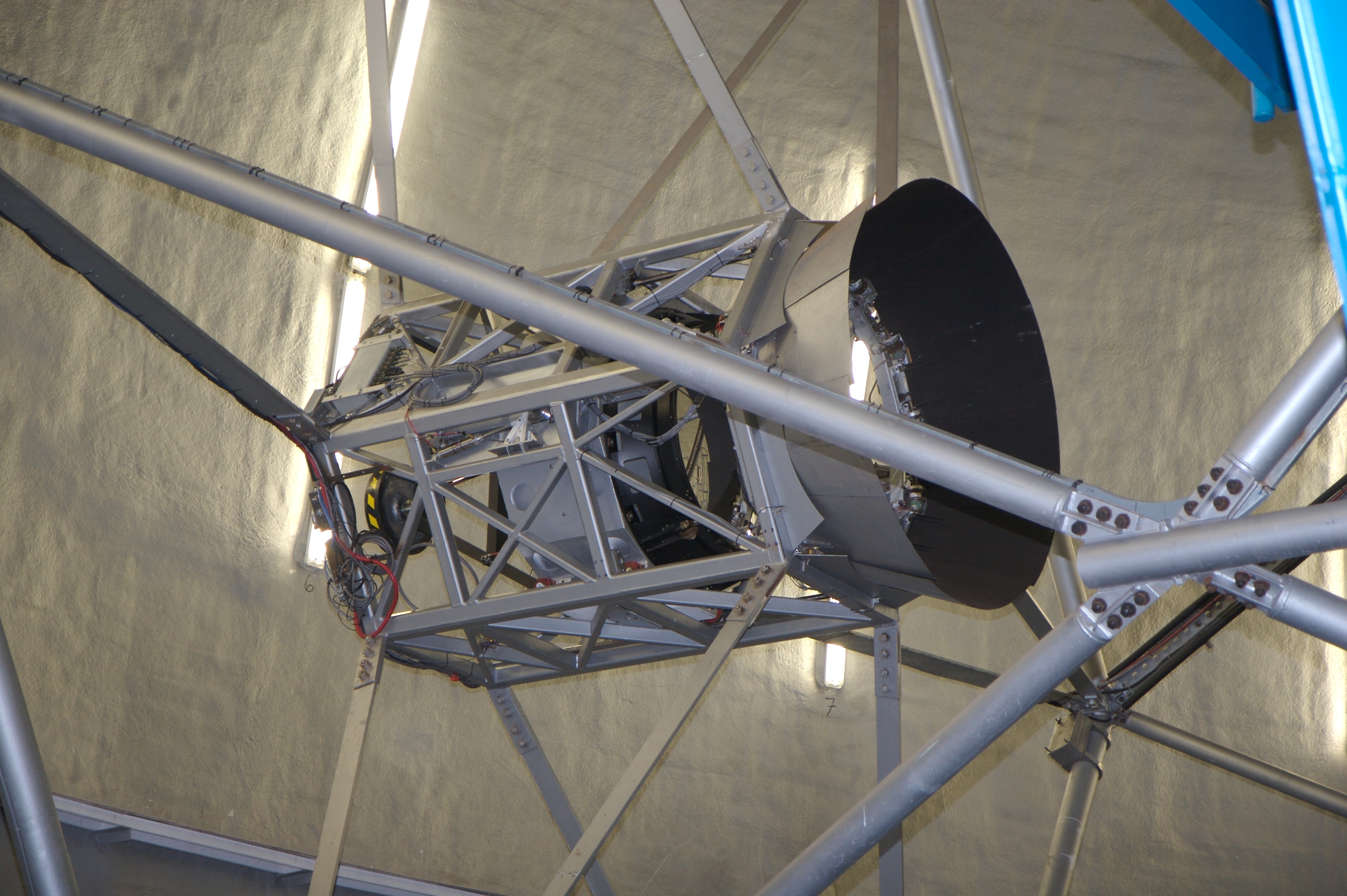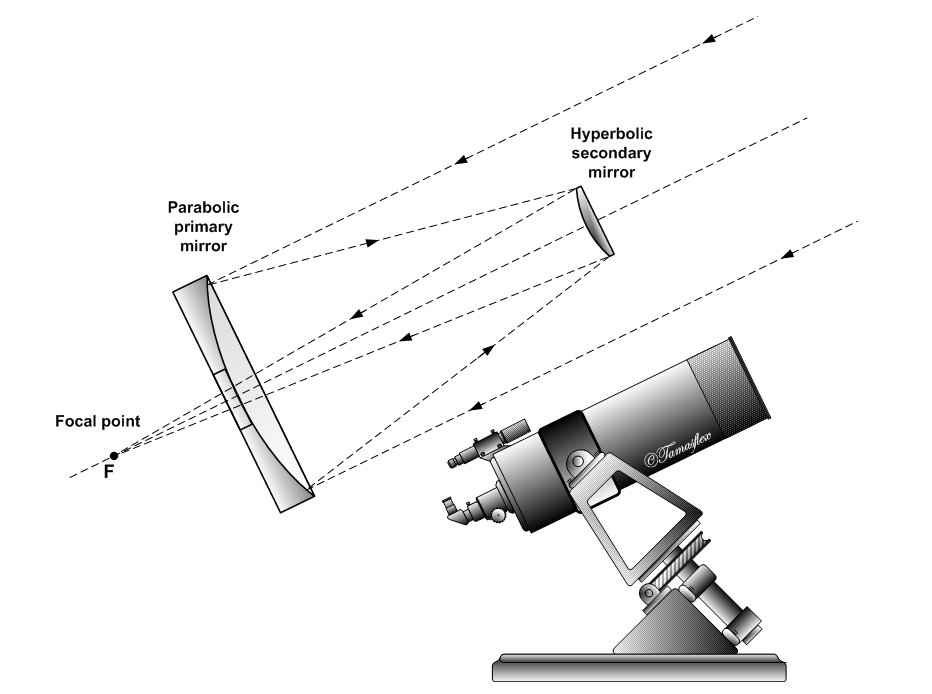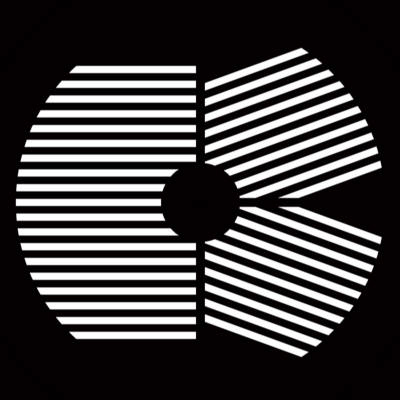|
List Of Telescope Parts And Construction
Hardware Accessories * Finderscope * Iron sight * Reflector (reflex) sight * Cheshire collimator: A simple tool to collimate a telescope Control * Clock drive * GoTo Mechanical construction * Mirror support cell * Serrurier truss *Silvering Mounts * Telescope mount - Types include: ** Altazimuth mount ** Equatorial mount *** Equatorial platform **** Poncet Platform *** Fork mount *** German equatorial mount *** Springfield mount Optics Mirrors and lenses are the critical light-bending components of a telescope. * Objective: The first lens or curved mirror that collects and focuses the incoming light. **Primary lens: The objective of a refracting telescope. ** Primary mirror: The objective of a reflecting telescope. *Corrector plate: A full aperture negative lens placed before a primary mirror designed to correct the optical aberrations of the mirror. ** Schmidt corrector plate: An aspheric-shaped corrector plate used in the Schmidt telescope. ** Meniscus corrector: A m ... [...More Info...] [...Related Items...] OR: [Wikipedia] [Google] [Baidu] |
Finderscope
A finderscope is an accessory sighting device used in astronomy and stargazing, typically a small auxiliary refracting telescope/ monocular mounted parallelly on a larger astronomical telescope along the same line of sight. The finderscope usually has a much smaller magnification than the main telescope, thus providing a larger field of view, useful for manually pointing (a.k.a. "slewing") the main telescope into a roughly correct direction that can easily place a desired astronomical object in view when zooming in. Some finderscopes have sophisticated reticles to more accurately aim the main telescope and/or even perform stadiometric measurements. Function and Design Finderscopes contain mechanisms to properly align them with the main telescope's line of sight. Accomplishing this alignment varies based on the design of the finderscope and its mount: usually on amateur telescopes it is done by three or six adjustment screws. Finderscopes usually come with a designation of th ... [...More Info...] [...Related Items...] OR: [Wikipedia] [Google] [Baidu] |
Refractor Telescope
A refracting telescope (also called a refractor) is a type of optical telescope that uses a lens as its objective to form an image (also referred to a dioptric telescope). The refracting telescope design was originally used in spyglasses and astronomical telescopes but is also used for long-focus camera lenses. Although large refracting telescopes were very popular in the second half of the 19th century, for most research purposes, the refracting telescope has been superseded by the reflecting telescope, which allows larger apertures. A refractor's magnification is calculated by dividing the focal length of the objective lens by that of the eyepiece. Refracting telescopes typically have a lens at the front, then a long tube, then an eyepiece or instrumentation at the rear, where the telescope view comes to focus. Originally, telescopes had an objective of one element, but a century later, two and even three element lenses were made. Refracting telescope is a technology t ... [...More Info...] [...Related Items...] OR: [Wikipedia] [Google] [Baidu] |
Honeycomb Mirror
A honeycomb mirror is a large mirror usually used as the primary mirror in astronomical reflecting telescopes whose face is supported by a ribbed structure that resembles a honeycomb. The design provides sufficient rigidity for ultra-high-precision optics while reducing the weight of the mirror. The reduced weight, in turn, allows smaller, lighter support and control structures, reducing the overall cost of the telescope. The term may also refer to mirrors made up of a coordinated set of individual hexagonal mirrors. The development of the honeycomb mirror has allowed the creation of larger instruments than would be feasible with solid mirrors. Solid mirrors are not only mechanically cumbersome, but are also difficult to cast and safely cool into a single, large blocks of glass. Honeycomb designs can reduce the weight of the mirror by as much as 80%. See also * Liquid-mirror telescope * List of largest optical reflecting telescopes * List of telescope parts and construction Hardw ... [...More Info...] [...Related Items...] OR: [Wikipedia] [Google] [Baidu] |
Curved Mirror
A curved mirror is a mirror with a curved reflecting surface. The surface may be either ''convex'' (bulging outward) or ''concave'' (recessed inward). Most curved mirrors have surfaces that are shaped like part of a sphere, but other shapes are sometimes used in optical devices. The most common non-spherical type are parabolic reflectors, found in optical devices such as reflecting telescopes that need to image distant objects, since spherical mirror systems, like spherical lenses, suffer from spherical aberration. Distorting mirrors are used for entertainment. They have convex and concave regions that produce deliberately distorted images. They also provide highly magnified or highly diminished (smaller) images when the object is placed at certain distances. Convex mirrors A convex mirror or diverging mirror is a curved mirror in which the reflective surface bulges towards the light source. Convex mirrors reflect light outwards, therefore they are not used to focus light. Su ... [...More Info...] [...Related Items...] OR: [Wikipedia] [Google] [Baidu] |
Mirror
A mirror or looking glass is an object that Reflection (physics), reflects an image. Light that bounces off a mirror will show an image of whatever is in front of it, when focused through the lens of the eye or a camera. Mirrors reverse the direction of the image in an equal yet opposite angle from which the light shines upon it. This allows the viewer to see themselves or objects behind them, or even objects that are at an angle from them but out of their field of view, such as around a corner. Natural mirrors have existed since prehistoric times, such as the surface of water, but people have been manufacturing mirrors out of a variety of materials for thousands of years, like stone, metals, and glass. In modern mirrors, metals like silver or aluminium are often used due to their high reflectivity, applied as a thin coating on glass because of its naturally smooth and very Hardness (materials science), hard surface. A mirror is a Wave (physics), wave reflector. Light consis ... [...More Info...] [...Related Items...] OR: [Wikipedia] [Google] [Baidu] |
Secondary Mirror
A secondary mirror (or secondary) is the second deflecting or focusing mirror element in a reflecting telescope. Light gathered by the primary mirror is directed towards a focal point typically past the location of the secondary. Secondary mirrors in the form of an optically flat ''diagonal mirror'' are used to re-direct the light path in designs such as Newtonian reflectors. They are also used to re-direct and extend the light path and modify the final image in designs such as Cassegrain reflectors. The secondary is typically suspended by X-shaped struts (sometimes called a "spider") in the path of light between the source and the primary, but can be mounted on other types of mounts or optical elements such as optical windows, or schmidt and meniscus corrector plates. Employing secondary mirrors in optical systems causes some image distortion due to the obstruction of the secondary itself, and distortion from the spider mounts, commonly seen as cross-shaped diffraction spikes ... [...More Info...] [...Related Items...] OR: [Wikipedia] [Google] [Baidu] |
Cassegrain Reflector
The Cassegrain reflector is a combination of a primary concave mirror and a secondary convex mirror, often used in optical telescopes and radio antennas, the main characteristic being that the optical path folds back onto itself, relative to the optical system's primary mirror entrance aperture. This design puts the focal point at a convenient location behind the primary mirror and the convex secondary adds a telephoto effect creating a much longer focal length in a mechanically short system. In a symmetrical Cassegrain both mirrors are aligned about the optical axis, and the primary mirror usually contains a hole in the center, thus permitting the light to reach an eyepiece, a camera, or an image sensor. Alternatively, as in many radio telescopes, the final focus may be in front of the primary. In an asymmetrical Cassegrain, the mirror(s) may be tilted to avoid obscuration of the primary or to avoid the need for a hole in the primary mirror (or both). The classic Cassegrai ... [...More Info...] [...Related Items...] OR: [Wikipedia] [Google] [Baidu] |
Catadioptric System
A catadioptric optical system is one where refraction and reflection are combined in an optical system, usually via lenses ( dioptrics) and curved mirrors ( catoptrics). Catadioptric combinations are used in focusing systems such as searchlights, headlamps, early lighthouse focusing systems, optical telescopes, microscopes, and telephoto lenses. Other optical systems that use lenses and mirrors are also referred to as "catadioptric", such as surveillance catadioptric sensors. Early catadioptric systems Catadioptric combinations have been used for many early optical systems. In the 1820s, Augustin-Jean Fresnel developed several catadioptric lighthouse reflectors. Léon Foucault developed a catadioptric microscope in 1859 to counteract aberrations of using a lens to image objects at high power. In 1876 a French engineer, A. Mangin, invented what has come to be called the Mangin mirror, a concave glass reflector with the silver surface on the rear side of the glass. The t ... [...More Info...] [...Related Items...] OR: [Wikipedia] [Google] [Baidu] |
Hartmann Mask
Hartmann mask is a tool to help focusing telescopes, mainly used by amateur astronomers. It is named after the German astronomer Johannes Franz Hartmann (1865–1936), who developed it around 1900. Theory and practice Every part of a mirror or lens produces the same image as the whole optical element. The light Light or visible light is electromagnetic radiation that can be perceived by the human eye. Visible light is usually defined as having wavelengths in the range of 400–700 nanometres (nm), corresponding to frequencies of 750–420 te ... is focused in the focal point. The light rays, however, go through different points of a plane before or behind the focus. This phenomenon can be used when focusing a telescope. The Hartmann mask is a simple opaque mask containing two or three holes. (This device is called a Hartmann mask if it has multiple holes, or a Scheiner disk if it has two holes.) The mask covers the aperture of the telescope. When the apparatus ... [...More Info...] [...Related Items...] OR: [Wikipedia] [Google] [Baidu] |
Carey Mask
A Carey mask (named after the inventor, George F. Carey) is a focusing aid for astronomical telescopes. The mask is in the form of a thin card or sheet that is placed over the front aperture of the telescope. There are four series of slits in the mask which form a diffraction pattern in the image plane. In this example the two sets of slits on the left are angled at 12 degrees to each other. Those on the right are angled at 10 degrees to each other. Different telescope and imaging combinations may require slightly different angles. The diffraction pattern caused by the left hand slits will be in the form of an 'X'. The right hand slits will also form an 'X' shape, but the lines forming the 'X' will cross at a narrower angle. When perfect focus is achieved the two 'X's will be superimposed and be perfectly symmetrical. Any slight error in focus will cause the 'X's to be offset, and this is very noticeable to the naked eye. In the example images below, focus error is obvious i ... [...More Info...] [...Related Items...] OR: [Wikipedia] [Google] [Baidu] |
Bahtinov Mask
The Bahtinov mask is a device used to focus small astronomical telescopes accurately. Although masks have long been used as focusing aids, the distinctive pattern was invented by Russian amateur astrophotographer Pavel Bahtinov (russian: Павел Бахтинов) in 2005. Precise focusing of telescopes and astrographs is critical to performing astrophotography. The telescope is pointed at a bright star, and a mask is placed in front of the telescope's objective (or in front of the aperture). The mask consists of three separate grids, positioned in such a way that the grids produce three angled diffraction spikes at the focal plane of the instrument for each bright image element. As the instrument's focus is changed, the central spike appears to move from one side of the star to the other. In reality, all three spikes move, but the central spike moves in the opposite direction to the two spikes forming the "X". Optimal focus is achieved when the middle spike is centered betwe ... [...More Info...] [...Related Items...] OR: [Wikipedia] [Google] [Baidu] |
Meniscus Corrector
A meniscus corrector is a negative meniscus lens that is used to correct spherical aberration in image-forming optical systems such as catadioptric telescopes. It works by having the equal but opposite spherical aberration of the objective it is designed to correct (usually a spherical mirror). Types Meniscus correctors are used as full aperture correctors, most commonly in a Maksutov telescope sub type called the Gregory or “spot” Maksutov–Cassegrain telescope. They are also used in the Bouwers meniscus telescope. There are Maksutov variations that use the same principle but place the meniscus lens as a sub-aperture corrector near the focus of the objective. There are other sub-aperture meniscus corrector catadioptric telescopes such as the Argunov–Cassegrain telescope and the Klevtsov–Cassegrain telescope. Invention The idea of using the spherical aberration of a meniscus lens to correct the opposite aberration in a spherical objective dates back as far as W. ... [...More Info...] [...Related Items...] OR: [Wikipedia] [Google] [Baidu] |









